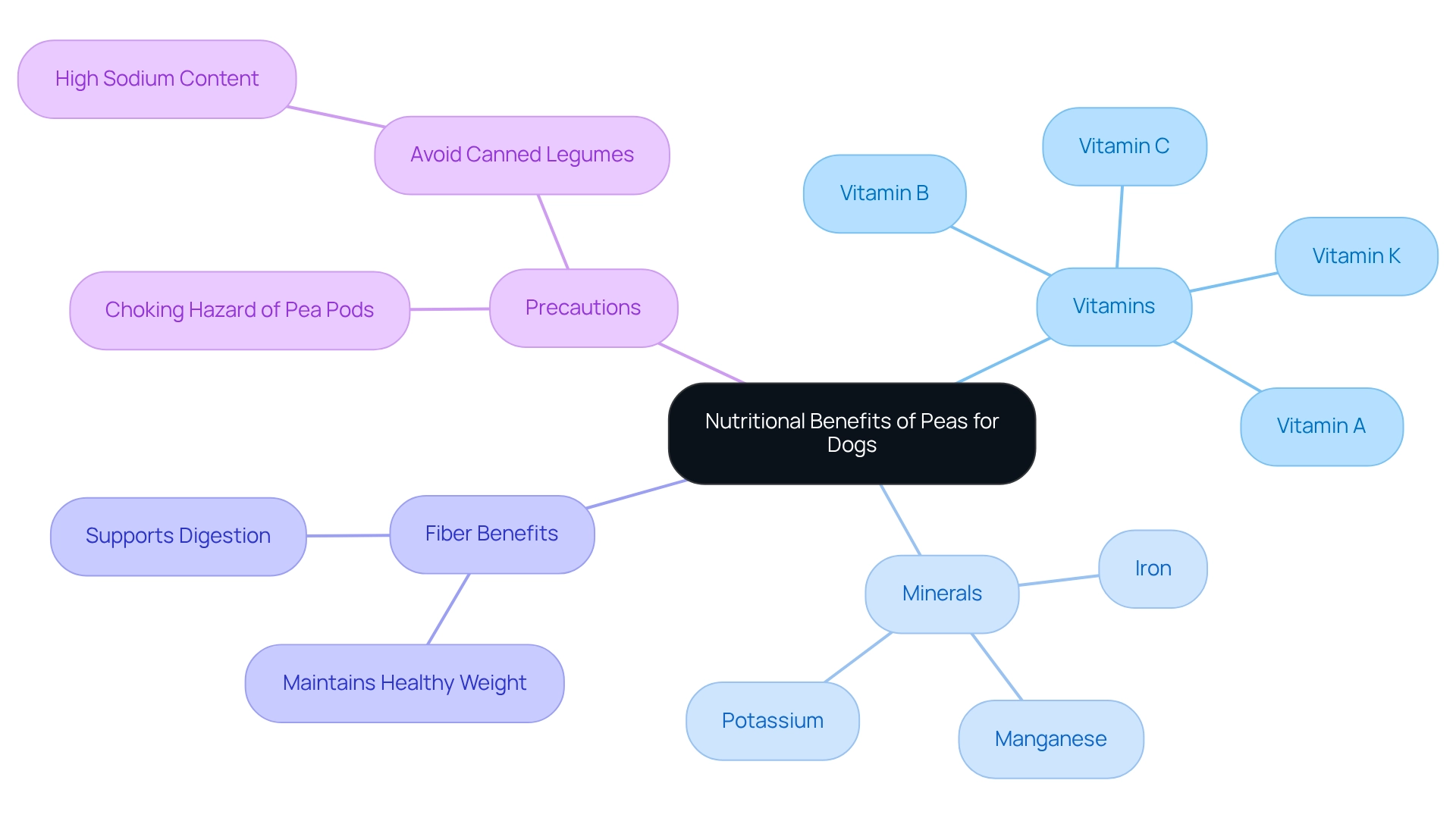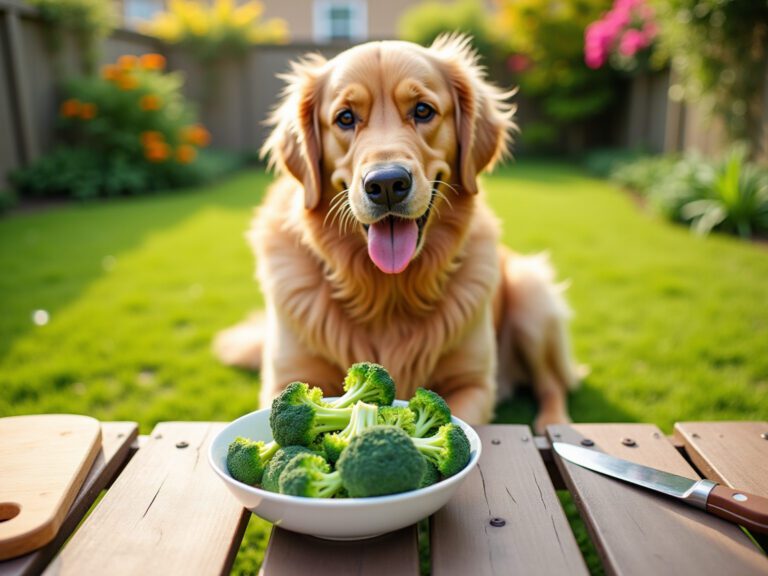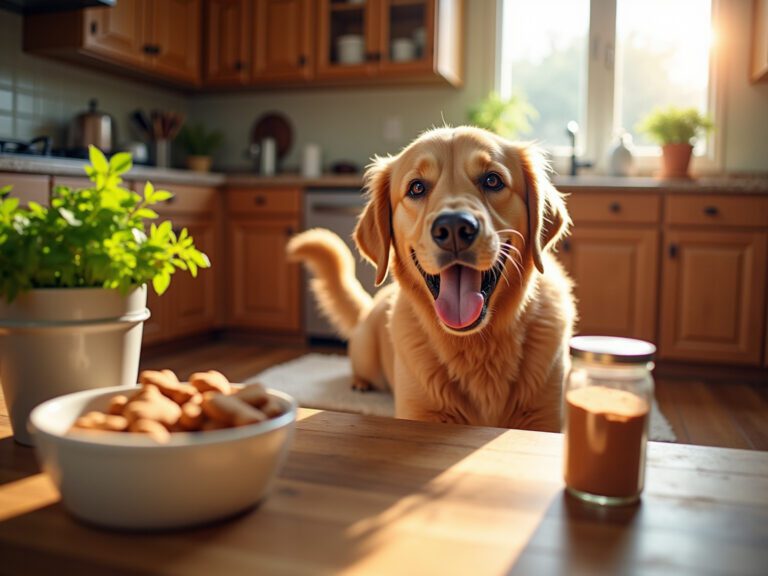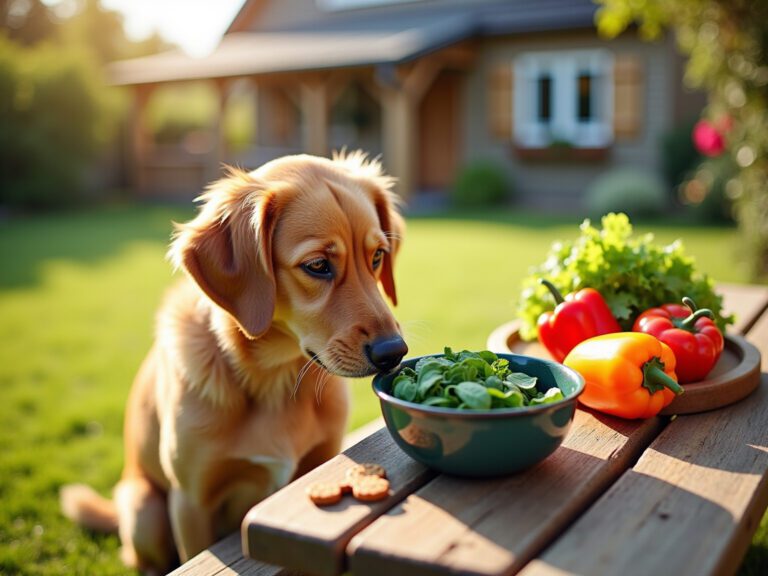Can Dogs Eat Peas? Safe Introduction and Nutritional Benefits
Overview
As a loving pet owner, you might wonder about the safety of various foods for your furry family members. Good news! Dogs can safely enjoy peas, which are non-toxic and packed with essential vitamins and minerals that support their overall health. At Adventure Den, we understand how important it is to provide the best for your pets, and incorporating peas can be a delightful addition to their diet.
However, it’s crucial to introduce peas gradually. This allows you to monitor for any adverse reactions, ensuring your pet’s comfort and safety. We recommend offering fresh or frozen peas, as these are the best options. Be cautious with canned varieties, as they often contain high sodium levels that can be harmful to your beloved companions.
By taking these steps, you can create a nurturing environment for your pets, filled with healthy choices. Remember, your furry friends deserve the best care, and we’re here to support you every step of the way. Why not give peas a try and see how your pet enjoys this nutritious treat?
Introduction
In the quest for optimal nutrition for your furry family members, many pet owners are discovering the benefits of incorporating vegetables into their dogs’ diets. Among these, peas have emerged as a popular choice. These small green powerhouses are not only safe for dogs but also rich in essential nutrients that can enhance their overall health.
However, as you consider adding peas to your dog’s meal plan, it’s important to carefully think about safety, preparation, and any potential risks. Understanding how to introduce this nutritious legume while keeping an eye out for any adverse reactions is vital for ensuring a positive experience for both you and your beloved pets.
As you explore the world of peas, remember that moderation and informed choices are key to unlocking the full benefits of this green gem.
Determine the Safety of Peas for Dogs
A common question is, can dogs eat peas, as they are generally safe for your furry family members to consume and are often found in many commercial dog foods. They are non-toxic and can provide nutritional advantages, including:
- Vitamins A and B
- Coumestrol
- Ferulic acid
These nutrients support cardiovascular well-being and lower the risk of arthritis. However, it’s essential to ensure that the legumes are fresh or frozen, as canned varieties often contain high sodium levels and additives that can be harmful to your dog’s health. Sweet legumes should be completely avoided, as they can be detrimental to dogs.
When introducing legumes into your dog’s meals, start with small amounts to monitor any possible negative reactions, such as gastrointestinal distress. Veterinary specialists, including Dr. Sarah J. Wooten, DVM, CVJ, emphasize that can dogs eat peas, recommending fresh or frozen peas as the healthiest choices for canines while highlighting the importance of moderation. Additionally, other green vegetables like:
- Broccoli
- Spinach
- Green beans
can be safely incorporated into your dog’s diet, offering variety and extra advantages when introduced carefully. This nurturing approach not only enhances your dog’s nutrition but also ensures a safe and enjoyable eating experience. According to a case study on safe vegetables for dogs, these green options can positively contribute to your dog’s overall well-being when fed in moderation.
Explore Nutritional Benefits of Peas
Peas are a powerhouse of essential nutrients, leading many pet owners to ask, can dogs eat peas to enhance their furry family member’s well-being? Rich in vitamins A, B, C, and K, they play vital roles in supporting immune function, promoting skin health, and ensuring proper cellular processes. Moreover, these legumes, including peas, are a superb source of minerals like iron, manganese, and potassium—key components for maintaining energy levels and overall vitality in dogs, which raises the question of can dogs eat peas.
The high fiber content in legumes supports digestion and helps maintain a healthy weight, which raises the question of can dogs eat peas; however, it’s essential to approach this nutritious option with care.
- Pea pods can pose a choking hazard, especially for small dogs, so be sure to remove them before feeding.
- Additionally, it’s wise to avoid canned legumes due to their elevated sodium levels, as highlighted by author Juan Salazar.
Including legumes in your dog’s meals can promote better digestive health and a more balanced nutritional profile, ultimately enhancing their overall well-being, so it’s important to ask, can dogs eat peas safely and mindfully? Your commitment to their health and happiness is what truly matters.

Implement Safe Introduction Techniques for Peas
To safely incorporate legumes into your furry family member’s diet, it’s important to follow these caring guidelines:
- Start Small: Begin with a minimal quantity, such as a few frozen or prepared legumes mixed into their regular food. This gentle approach helps ease them into new foods.
- Monitor Reactions: Keep a watchful eye on your dog for any signs of digestive upset, such as gas or diarrhea. Understanding their reactions is key to ensuring their comfort.
- Gradually Increase: If your dog tolerates the initial serving well, slowly increase the amount over several days. This gradual adjustment allows their digestive system to adapt comfortably.
- Consider Preparation: Lightly cook green legumes to enhance digestibility, serving them plain without added salt or seasonings. Remember to avoid feeding whole pods, as they can pose choking hazards.
Incorporating legumes slowly can enhance digestion and boost energy levels, making them a valuable addition to your dog’s nutrition, and a common question is whether can dogs eat peas. Additionally, snap legumes, which are rich in vitamins A and C, raise the question of whether can dogs eat peas as a nutritious snack when prepared correctly, ensuring they are easy to digest.
As Juan Salazar notes, “Peas contain a moderate amount of protein, which is essential for building and repairing tissues, leading to the question of whether can dogs eat peas.” This highlights the nutritional advantages of legumes, like beans, in your dog’s meals. By nurturing your pet with these wholesome foods, you’re taking a significant step towards their health and happiness.

Identify Risks and Precautions When Feeding Peas
While peas can be a nutritious addition to your furry family members’ diets, several risks warrant careful consideration:
- Digestive Upset: Introducing legumes too quickly or in large quantities can lead to gastrointestinal problems such as gas, diarrhea, or vomiting. It’s best to start with small portions to monitor your dog’s reaction. A study involving eight dogs highlighted the importance of gradual dietary adjustments, as some dogs may develop food allergies, including to legumes.
- Choking Hazard: Whole legumes can pose a choking risk, particularly for smaller breeds. To keep your pet safe, always mash or cut legumes into smaller, manageable pieces before serving.
- Allergic Reactions: Some dogs may exhibit allergies or sensitivities to legumes. Common signs include itching, redness, or gastrointestinal distress. If you suspect an allergy, please consult your veterinarian for guidance. As Dr. Ryan Llera wisely advises, “If you think your pet may have a food allergy, you should discuss this with your veterinarian, who can help your pet resume a healthier, more comfortable life.”
- Kidney Issues: For dogs with pre-existing kidney conditions, it’s essential to avoid legumes due to their purine content, which can worsen health problems.
- Research Insights: Veterinary advice emphasizes the importance of gradual dietary introductions and close observation for any adverse reactions.
- Case Studies: Research comparing various nutritional plans revealed that certain formulations, such as those containing wrinkled legumes, resulted in lower fecal bile acid excretion, indicating variations in digestibility. This shows that not all pea types are equally suitable for every dog, making it vital for owners to consider if can dogs eat peas when incorporating them into their pets’ meals.
Before making significant changes to your dog’s diet, it is crucial to consult your veterinarian to ensure a safe and healthy transition for your beloved pet.
Conclusion
Incorporating peas into your furry family member’s diet can offer numerous health benefits, yet it is essential to prioritize their safety and well-being. Peas are generally safe for dogs and provide vital nutrients, including vitamins A, B, C, and K, along with essential minerals. However, it’s important to consider the type of peas used, with fresh or frozen options being the healthiest choice. Avoiding canned varieties and sweet peas, which are toxic, is crucial for maintaining your dog’s health.
When introducing peas, start with small portions and monitor for any adverse reactions. Gradual increases in quantity will allow your dog’s digestive system to adjust, helping to prevent gastrointestinal issues. Proper preparation, such as lightly cooking peas and avoiding whole pods, can further enhance safety and digestibility.
While the nutritional benefits of peas are significant, potential risks such as choking hazards, digestive upset, and allergic reactions must not be overlooked. Consulting a veterinarian is advisable to ensure that any dietary changes are suitable for your specific dog, especially if there are pre-existing health conditions. By taking informed steps, you can successfully integrate this green powerhouse into your pet’s diet, contributing to their improved health and overall well-being.
Frequently Asked Questions
Can dogs eat peas?
Yes, dogs can eat peas as they are generally safe and often found in many commercial dog foods. They are non-toxic and provide nutritional benefits.
What nutritional advantages do peas offer to dogs?
Peas provide vitamins A and B, coumestrol, and ferulic acid, which support cardiovascular health and may lower the risk of arthritis.
Are there any precautions to take when feeding peas to dogs?
It’s important to ensure that the peas are fresh or frozen, as canned peas can contain high sodium levels and harmful additives. Sweet peas should be completely avoided.
How should I introduce peas into my dog’s diet?
Start with small amounts of peas to monitor for any negative reactions, such as gastrointestinal distress.
What other vegetables can be safely included in a dog’s diet?
Other safe vegetables include broccoli, spinach, and green beans, which can be introduced carefully for variety and additional nutritional benefits.
What is the recommended approach for feeding vegetables to dogs?
A nurturing approach that includes moderation and careful introduction of vegetables can enhance your dog’s nutrition and ensure a safe eating experience.







